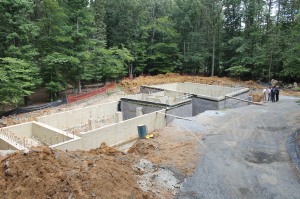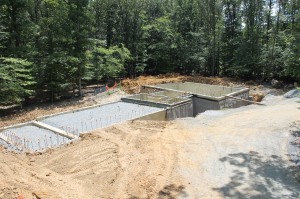The Northern Virginia e+ Home which is located in Springfield, Virginia is earning a spotlight for its green and passive properties. This Bartley Corp project included the full foundation package and many green products. The Thermomass insulated walls that Bartley Corp constructed vastly improved the heating and cooling efficiencies. Bartley Corp also installed the Stego Wrap Vapor Barrier and XPS Insulation Board, both which were placed under the basement concrete slab. As an architectural appeal, Rockwell window wells were installed to protect the basement windows and allow more natural light. Another insulated product, the AmDeck Floor system, was used to support the above grade concrete deck.
Every project requires a different set of requirements, specified products and management. The Bartley Corporation consistently excels due to the Attention to Detail that is taken individually on each project.
More about the Northern Virginia e+ Home can be found at http://www.nova-eplus-home.com























































